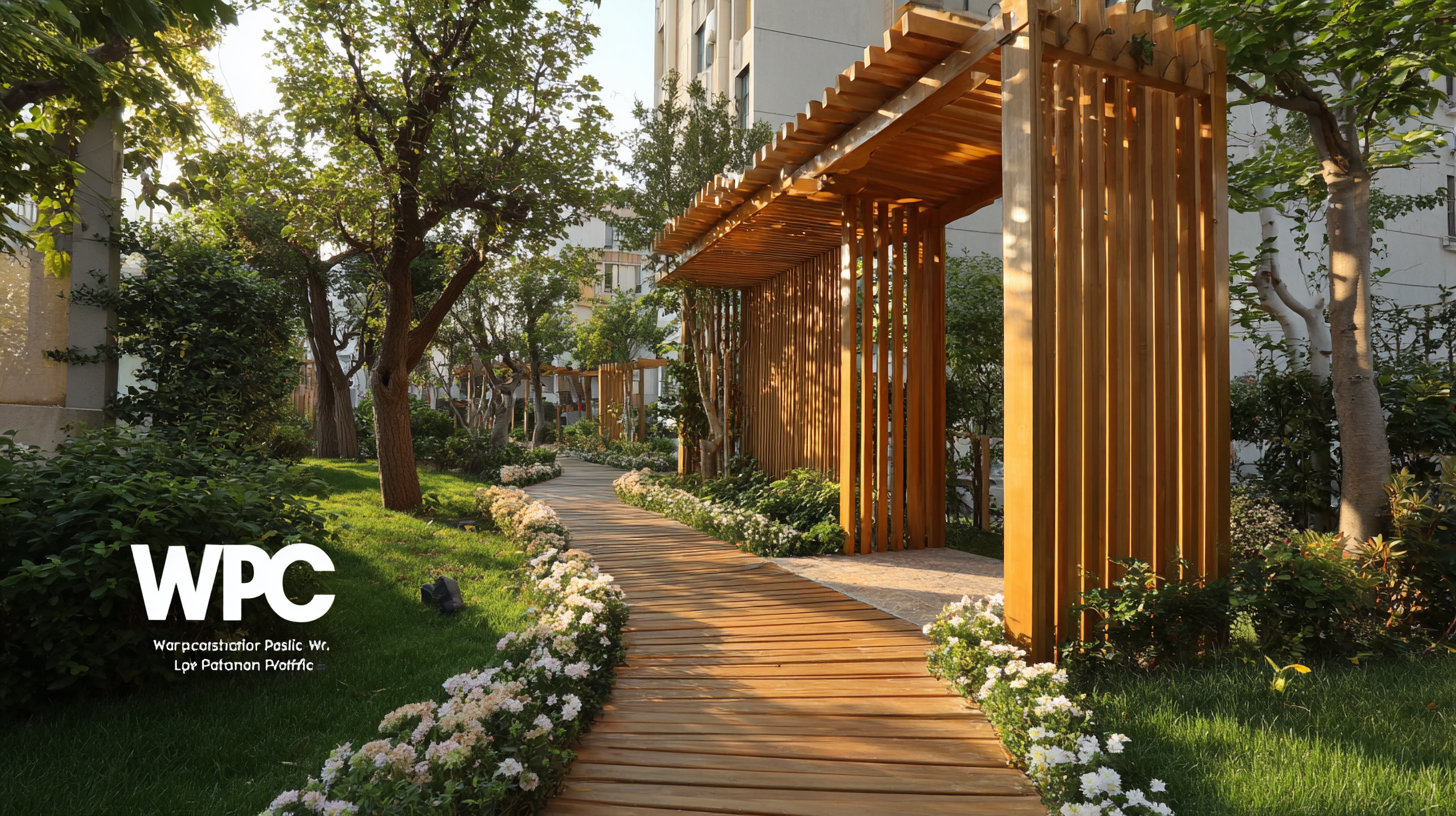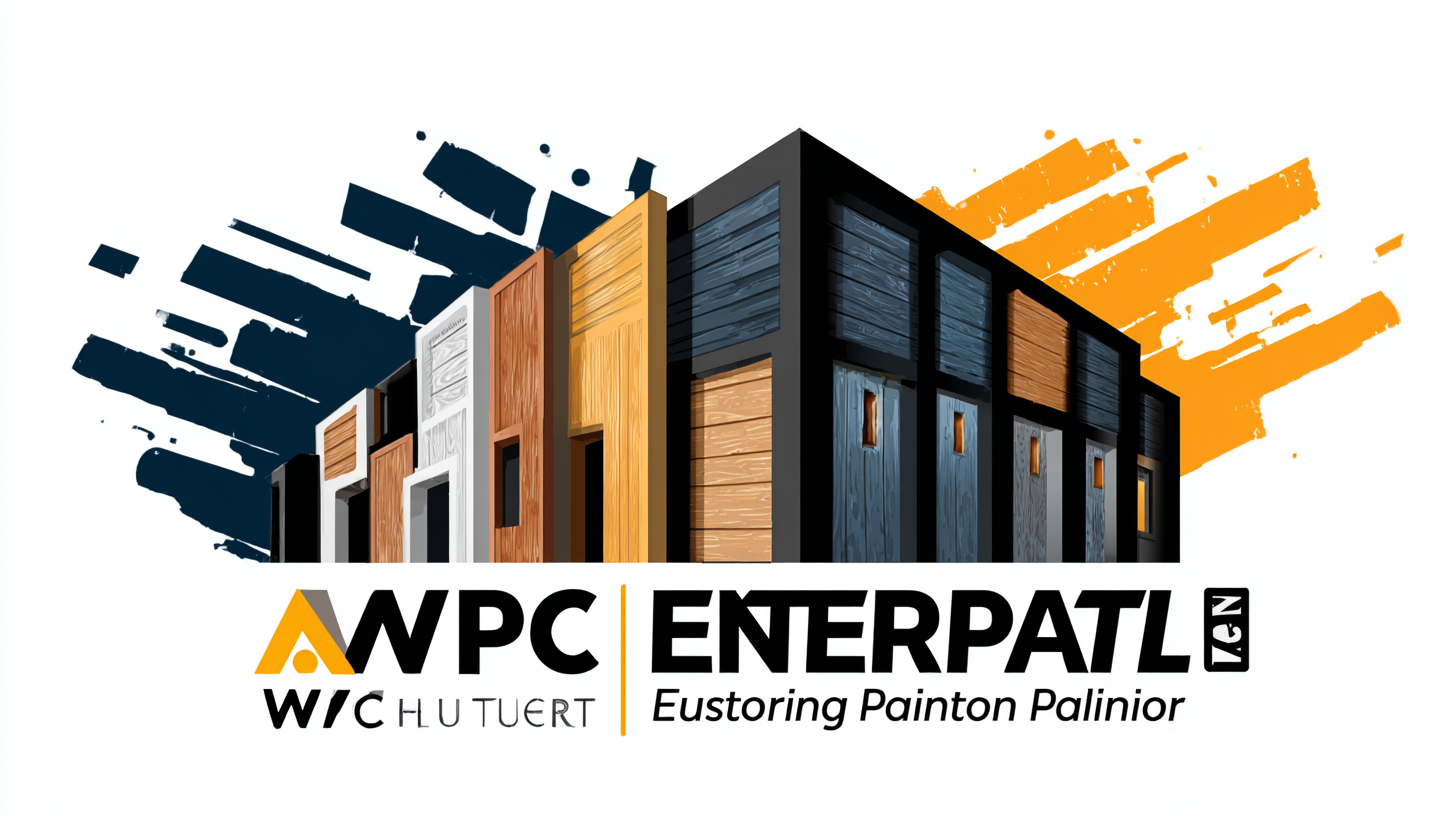Shandong Xiangying New Materials Technology Co., Ltd.
Shandong Xiangying New Materials Technology Co., Ltd.
In the ever-evolving landscape of construction materials, the selection of the right Wpc Exterior Wall Panel has become a pivotal decision for contractors and architects alike. As we look towards 2025, emerging technological trends are set to redefine the standards for exterior wall solutions, making it essential to stay informed. This blog will explore innovative advancements in the industry and provide a comprehensive checklist to aid in selecting the best Wpc Exterior Wall Panel for your project. By understanding the latest trends and evaluating essential criteria, you can ensure that your construction meets both aesthetic and functional demands while benefiting from the durability and eco-friendliness that Wpc panels offer. Join us as we navigate this crucial aspect of modern architecture and construction.

When selecting WPC (Wood Plastic Composite) exterior wall panels for your 2025 project, understanding the trends and factors that influence your choice is essential. One significant trend is the emphasis on sustainability. As more consumers prioritize eco-friendly materials, WPC panels made from recycled wood and plastic are gaining popularity. Choosing panels that boast green certifications can enhance your project’s appeal and align it with modern environmental standards.
Another crucial factor to consider is the durability of the panels. With advancements in technology, many WPC products now offer enhanced resistance to weathering, UV rays, and termites. When selecting panels, look for options with a long warranty period, as they often indicate superior product quality.
Tip: Always request samples before making a bulk purchase to evaluate the texture and finish. Additionally, consider local climate conditions; panels designed for high humidity environments may perform better in specific geographic areas. Making informed decisions based on these trends will ensure the success of your exterior wall project.
When considering materials for exterior wall panels, the choice often comes down to Wood Plastic Composite (WPC) versus traditional options like wood or vinyl. Industry data reveals that WPC offers significant advantages in durability and maintenance. Unlike traditional wood, which can warp, splinter, or require extensive upkeep, WPC is engineered to resist moisture and pests, making it an ideal choice for various climates. Additionally, WPC materials typically have a longer lifespan, reducing the need for replacements over time.
**Tip:** When evaluating your project needs, consider the long-term cost of ownership rather than just the initial price. While traditional materials may seem cheaper upfront, their maintenance costs can accumulate significantly over the years.
Furthermore, WPC panels come in a variety of styles and finishes, allowing for greater design flexibility without sacrificing performance. Industry insights highlight that WPC can mimic the appearance of natural wood while providing superior resistance to fading and weather damage. This makes it an attractive option for homeowners and builders looking to balance aesthetics with practicality.
**Tip:** Always check for certifications and warranties provided by manufacturers when selecting WPC panels, as these can give you confidence in the quality and performance of your chosen materials.

When selecting WPC (Wood-Plastic Composite) exterior wall panels for your project, sustainability should be a primary consideration. Evaluating the eco-friendliness of WPC panels involves several key metrics, such as the source of materials, the manufacturing process, and the lifespan of the product. Opting for panels made from recycled wood fibers and plastics not only reduces waste but also lowers the carbon footprint of your project. Additionally, many manufacturers prioritize sustainable sourcing practices, ensuring that the wood used is harvested from responsibly managed forests.
Another important aspect of sustainability is the durability of WPC panels. Products that can withstand harsh weather conditions without significant wear reduce the need for frequent replacements and maintenance, thereby minimizing long-term environmental impact. Examine the manufacturers' claims regarding longevity, resistance to moisture, and pest issues, as these factors significantly influence the overall sustainability of your choice. By prioritizing WPC panels that excel in these areas, you're not only making an environmentally conscious decision but also contributing to the creation of healthier living spaces.
In the realm of modern construction, the integration of Wood Plastic Composites (WPC) for exterior wall panels has garnered significant attention, especially due to technological innovations that enhance their durability. Advanced manufacturing processes now allow for the precise blend of wood fibers and plastic, resulting in a material that resists common issues such as rot, decay, and insect damage, which often plague traditional wood. This superior resilience is achieved through the use of specialized additives and treatments that ensure the WPC maintains its structural integrity even in harsh weather conditions.
Furthermore, the development of environmentally friendly production techniques is revolutionizing WPC materials. Innovations such as extrusion technology and co-extrusion processes create a denser, more durable panel that minimizes waste and improves recyclability. These advances not only extend the lifespan of the exterior wall panels but also provide builders with sustainable options that align with green building practices. As architects and project managers seek materials that meet both performance and ecological standards, WPC is rapidly becoming a top choice, merging durability with environmental responsibility.
| Dimension | Description | Advantages | Durability Factor |
|---|---|---|---|
| Thickness | Typically ranges from 8mm to 20mm | Greater thickness provides better insulation and impact resistance | High |
| Color Options | Wide range of colors available | Customizable to match architectural designs | Moderate |
| Maintenance Requirements | Low maintenance; resistant to pests and weather | Saves time and cost on upkeep | High |
| Eco-Friendliness | Made from recycled materials | Reduces carbon footprint | Moderate to High |
| Weather Resistance | Resistant to UV, moisture, and temperature fluctuations | Long lifespan and minimal warping | Very High |
The demand for Wood Plastic Composite (WPC) panels is projected to grow significantly by 2025, driven primarily by the rising preference for eco-friendly and durable building materials. According to a recent market research report, the WPC industry is estimated to reach a market value of $8 billion by 2025, with an annual growth rate of over 10%. This growth is largely attributed to the increasing construction activities in emerging markets and the trend towards sustainable building solutions.
The heightened awareness of environmental impacts is pushing manufacturers to innovate and produce WPC products that are not only aesthetically pleasing but also easier to maintain compared to traditional materials. As urbanization continues to accelerate, the demand for WPC panels in both residential and commercial applications will likely follow suit.

Tips: When selecting WPC exterior wall panels for your project, consider the environmental certifications of the materials, ensuring they're sourced sustainably. Additionally, evaluate the panel's weather resistance and UV stability to maximize longevity. Lastly, thorough research on color and texture options can enhance your project’s design while aligning with market trends, which often dictate consumer preferences.
